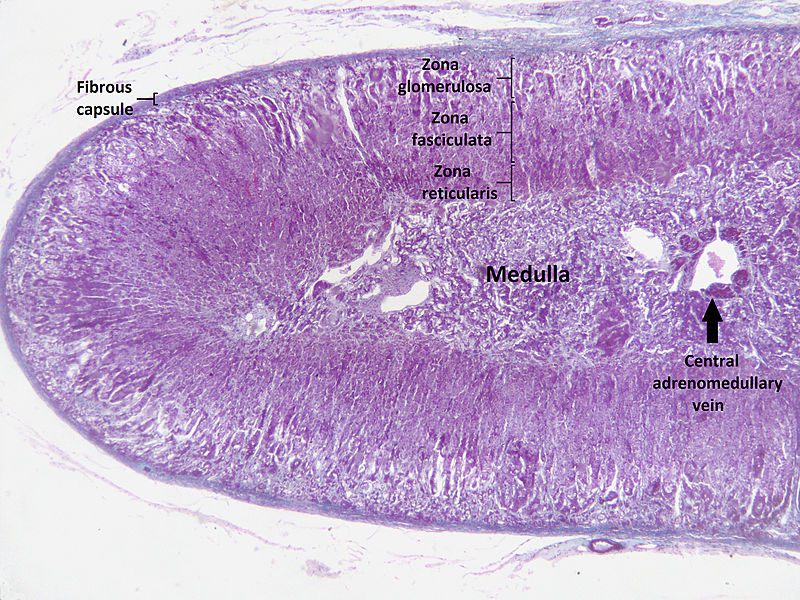
The medulla is stimulated to secrete the amine hormones epinephrine and norepinephrine. The sympathomedullary (SAM) pathway involves the stimulation of the medulla by impulses from the hypothalamus via neurons from the thoracic spinal cord. It is really an extension of the autonomic nervous system, which regulates homeostasis in the body. The adrenal medulla is neuroendocrine tissue composed of postganglionic sympathetic nervous system (SNS) neurons. This pathway will be discussed in more detail below. ACTH then stimulates the adrenal cortex to produce the hormone cortisol. The HPA axis involves the stimulation of hormone release of adrenocorticotropic hormone (ACTH) from the pituitary by the hypothalamus. The adrenal cortex, as a component of the hypothalamic-pituitary-adrenal (HPA) axis, secretes steroid hormones important for the regulation of the long-term stress response, blood pressure and blood volume, nutrient uptake and storage, fluid and electrolyte balance, and inflammation. Each region secretes its own set of hormones. The cortex itself is divided into three zones: the zona glomerulosa, the zona fasciculata, and the zona reticularis. The adrenal gland consists of an outer cortex of glandular tissue and an inner medulla of nervous tissue. In females, an imbalance may result in amenorrhea, hirsutism, or infertility, and males can have early puberty or infertility.View the University of Michigan WebScope at to explore the tissue sample in greater detail. A DHEAS blood test is done to help diagnose adrenal tumors, cancer, or sex hormone imbalances that may be affecting a person's development. Dehydroepiandrosterone sulfate (DHEAS) test: DHEAS can be converted into sex hormones like estrogen and testosterone.Cortisol can also be measured with a 24-hour urine test (where you collect a day’s worth of urine and send it to a laboratory for analysis) or through saliva as a swab test (in certain instances). A blood draw is done twice during the day, once in the morning and another later in the day.

Cortisol test: This test is used to look for signs of Cushing’s syndrome or Addison’s disease (when the adrenal glands make too much and too little cortisol, respectively).Benign adrenal gland tumors are very common, while adrenal cancer is rare, affecting 1 or 3 per 1 million people. An aldosterone test can diagnose adrenal fatigue or insufficiency, or a possible tumor in the adrenal glands. Aldosterone test: With a sample of blood or urine, this test monitors how much aldosterone is in the body.

A heel prick blood sample is analyzed for 17-hydroxyprogesterone, which is created when cortisol is produced by the adrenal glands.


 0 kommentar(er)
0 kommentar(er)
